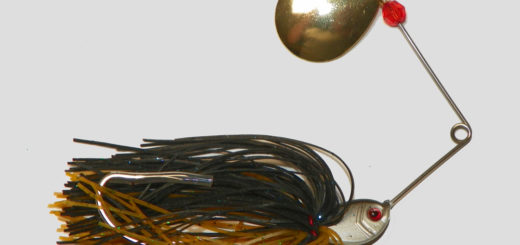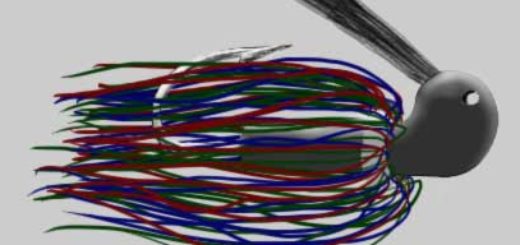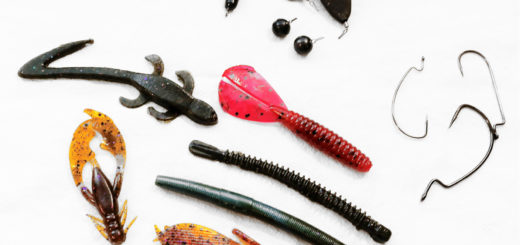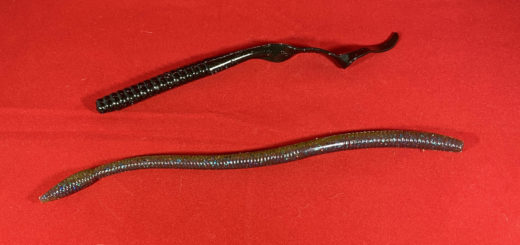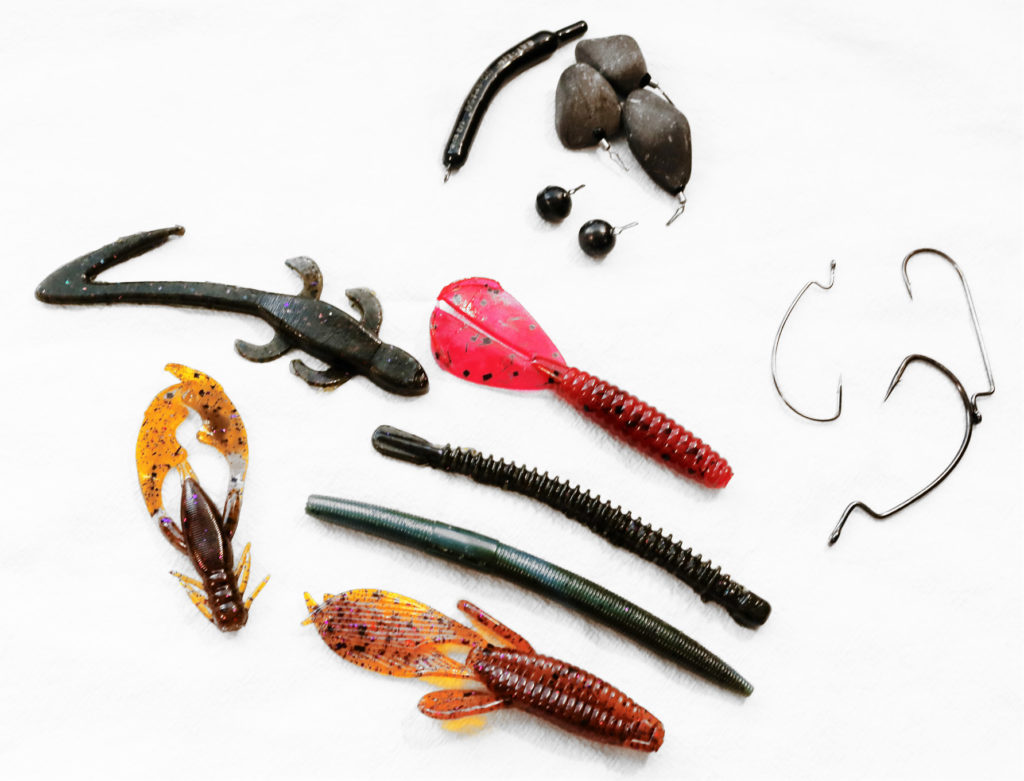
Many anglers are familiar with a drop shot, or have at least heard of a drop shot, but a power shot is less well known. A drop shot’s tactic is stealth. It keeps the bait up off the bottom, and it does so without showing too much of its actual intent – to catch a fish. The power shot kicks that up a notch.
While the drop shot uses a finesse sort of bait, a goby or a smaller finesse worm such as the ones made by Robo Worm, which have been a favorite since the beginning of drop shotting, a power shot bait is much more beefy.
Think of the baits normally used in a Texas rig set up. The rig itself is set up much in the same fashion. There is a weight at the bottom, a hook some way up the line, and it is attached to the main line with a swivel. Let’s break that down.
For a main line, braid is best. On a bait caster, 40-50-pound braid is standard. Anglers may use a heavier line if they wish. Braid gives a great feel and it stout enough to pull through weeds and most other structure. From there, there are two options.
Traditionally, the main braid line was attached to a monofilament or fluorocarbon leader. While in a drop shot, that leader would likely be 6 pound or less, anglers should feel free to experiment with power shot leader and go much heavier. They will likely find themselves in situations with denser vegetation that will call for heavier line. 10, 12, even, at times, 14- pound line can be used. As a standard, starting with 10-pound line and moving up or down is a good idea. Alternatively, the main line can be tied directly to a power shot hook, which is essentially a hook on a swivel.
The hook will be attached to the leader in the same fashion as it would be with a drop shot. There is some element of experimentation here. It may be hard to know, at first, how much leader an angler will need. The best course of action is to leave more of a tag end than an angler thinks they will need, and modify that once on the water.
Using a palomar knot, the hook should be attached to the leader. Once that is done, before attaching the swivel, the angler should be sure the hook is facing up, toward the end of the leader to which the swivel will be attached. Loop the tag end back around through the eye of the hook. This will keep it straight on the line.
A larger weight is used with a power shot than a drop shot. It may be used in heavier cover such as pads or other vegetation, so the larder weight it needed to get to the bottom. A 3/8 or ½ are most popular, but an angler can choose an even heavier weight if conditions require it. The weight is then attached to the bottom of the line.
In choosing baits, there are a wide variety that can be used. Anything from a creature bait to a worm or even a fluke style jerk bait can all be good choices. In the heat of summer, anglers should not be afraid to upsize the bait to even a 7 or 10 inch worm. Bigger worms will require bigger hooks, but that is okay for this set up.
This set up can be fished anywhere, but really excels in heavy vegetation. It can be fished around lily pads or in milfoil or other plants easily. When fishing in pads, create a leader such that the bait stays just under the pads or partially down the water column. This creates a presentation fish do not see very often.
Early in the year when fishing milfoil or grasses, the bait can be places such that it is just over the top of the grass. Later in the year, it can be ripped through the weeds, which will often provide violent strikes. The power shot is a versatile bait that can lead to catching fish where other techniques fail.


